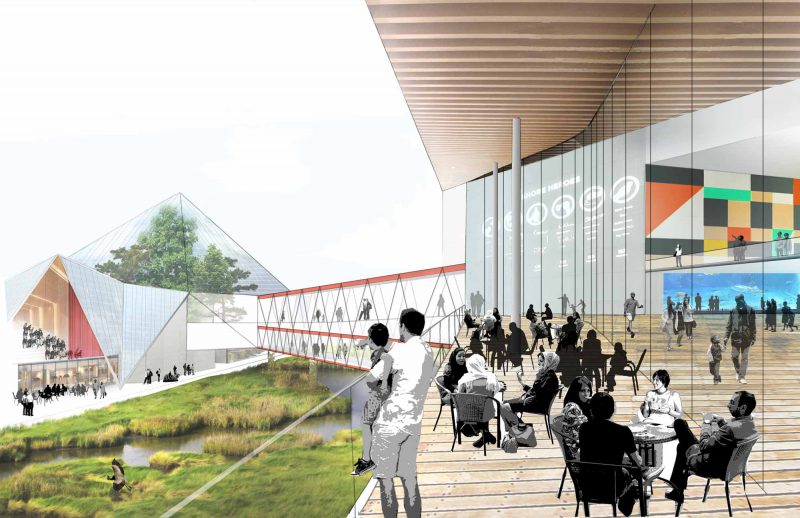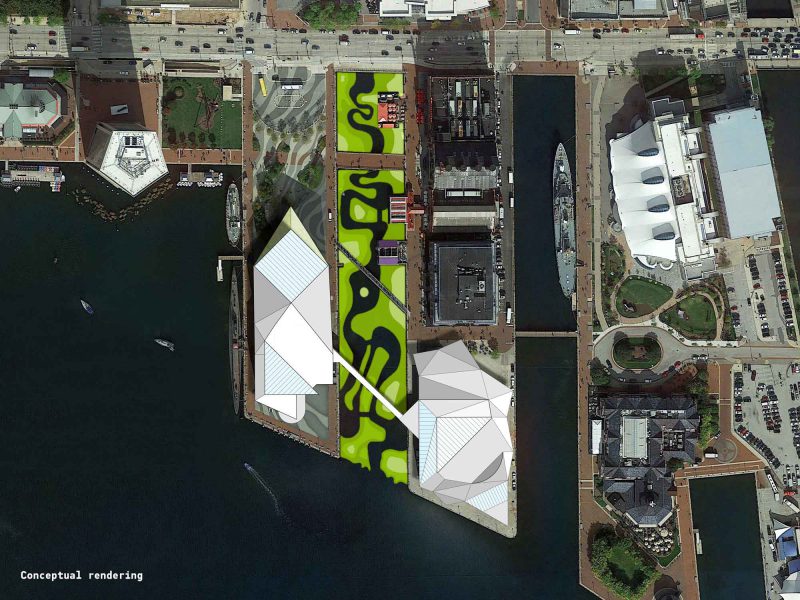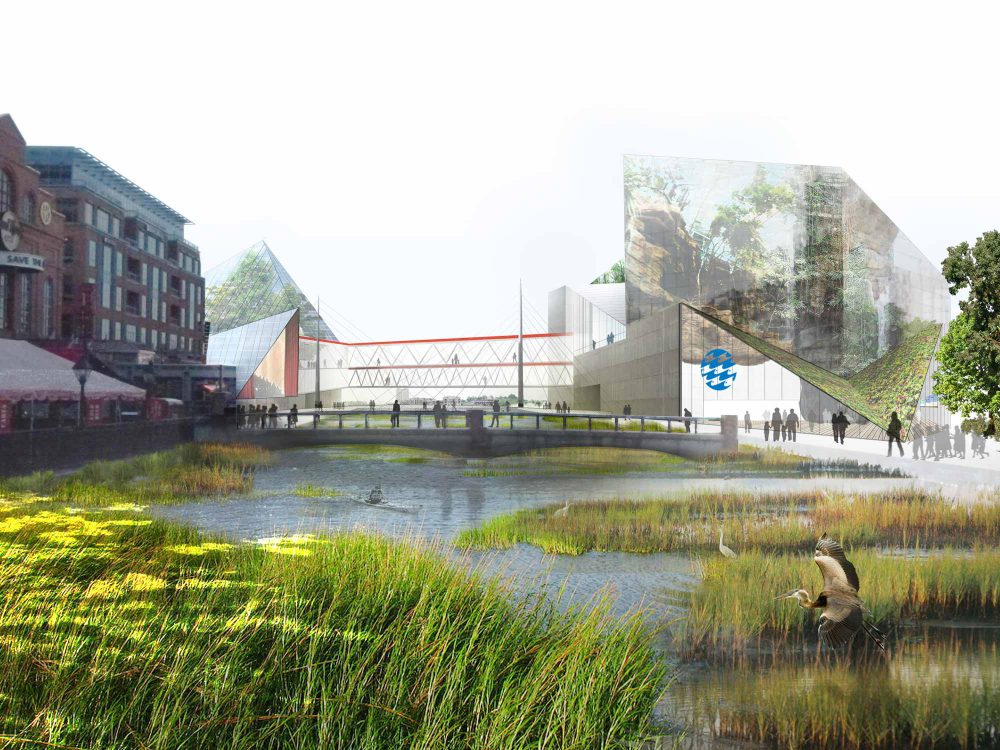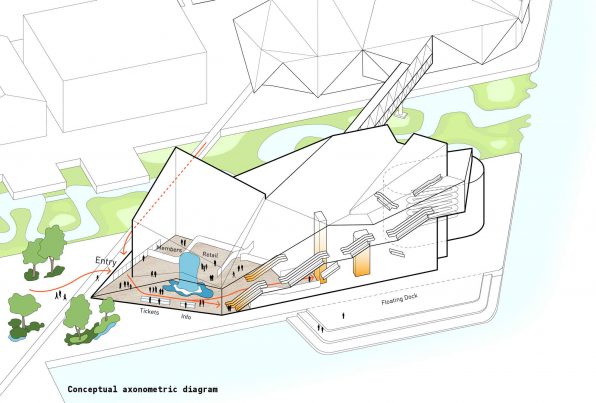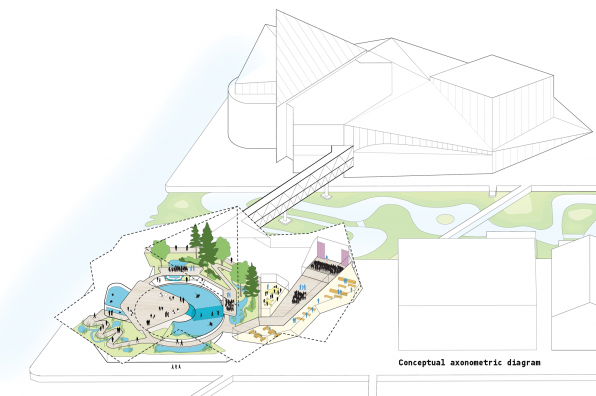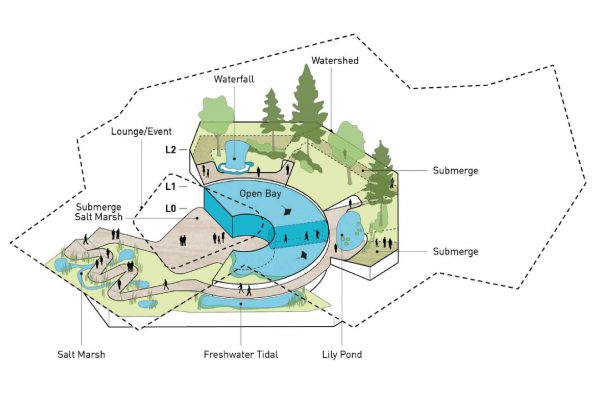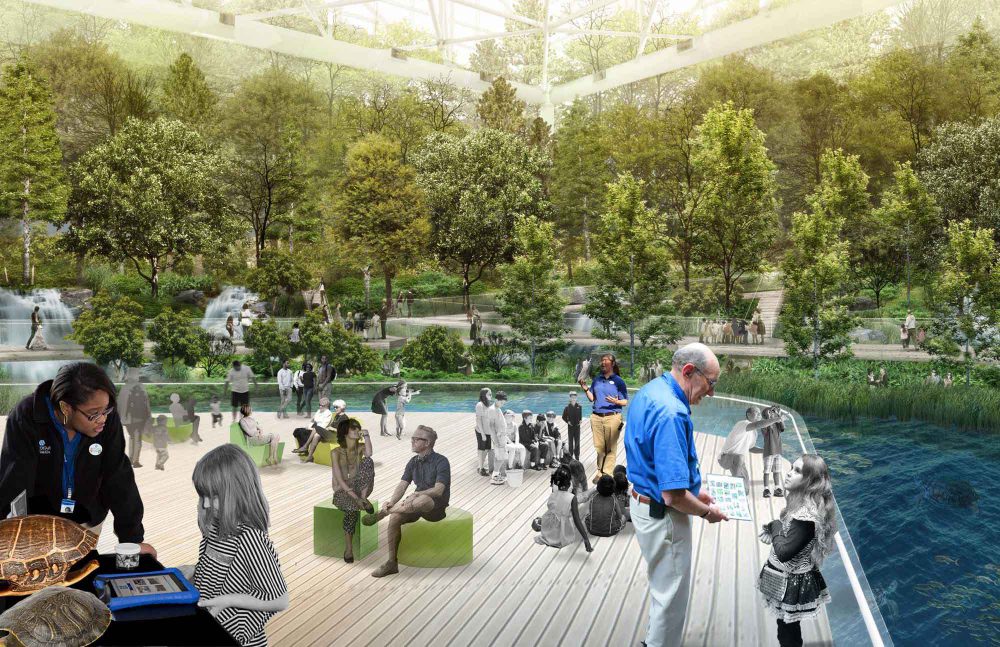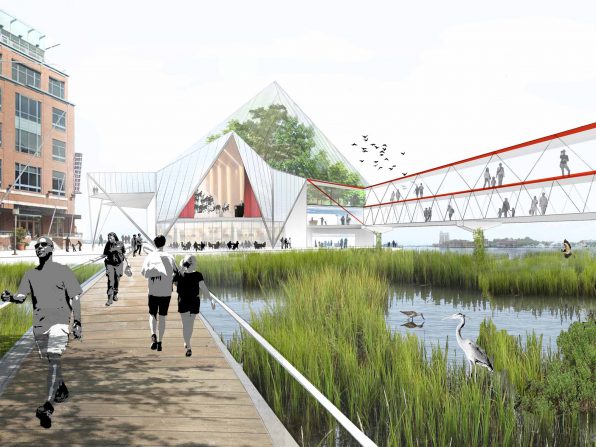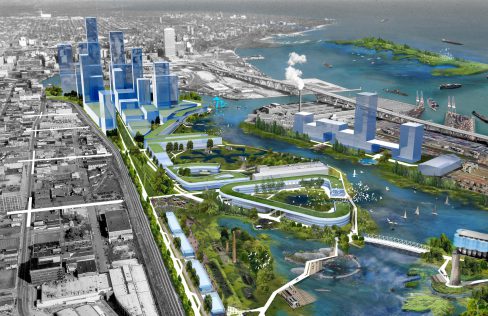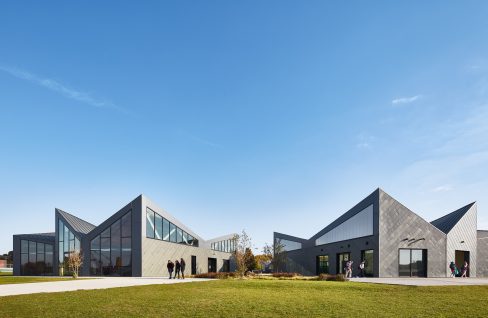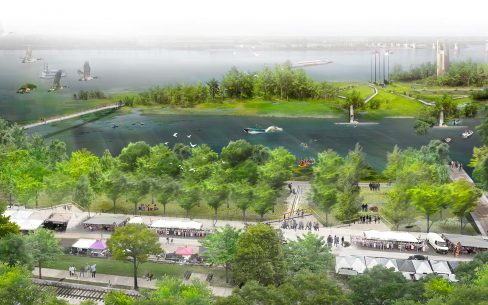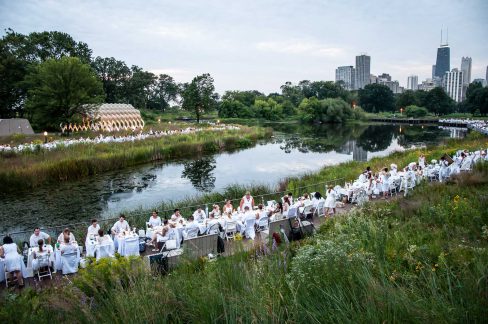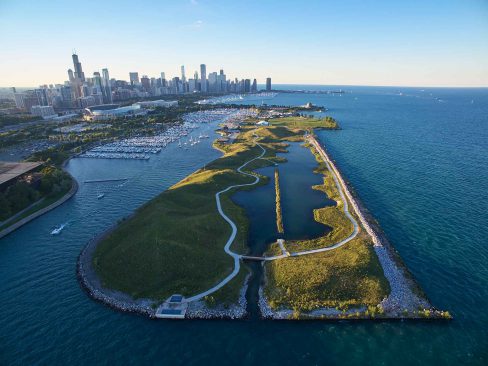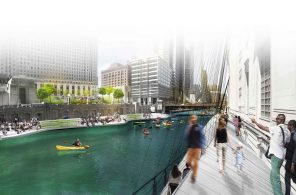National Aquarium Strategic Master Plan
Location
Baltimore, MD
Status
Designed 2015
Client
National Aquarium
Type
Civic and Educational
Size
360,000 sf with 37,000-sf urban wetland
Tags
The National Aquarium sought out Studio Gang to help them update the aquarium model for the future.
The Strategic Master Plan identifies opportunities for sustainable growth, improves the visitor experience, and reinforces the organization’s commitment to conservation and education at every scale.
At the urban scale, the plan suggests connecting the Aquarium’s current facilities, separated by a former ship slip in Baltimore’s Inner Harbor, with an urban wetland.
By providing outdoor educational and social spaces for visitors and the public, the plan simultaneously improves the local ecology, creates a campus identity, strengthens connectivity, and extends the Aquarium’s growing conservation work in the region.
Inside the building complex, the plan calls for a redesigned circulation sequence to enhance visitor flow through the exhibits and visitor amenities. The plan also creates and enriches spaces for education through a new unifying concept for the exhibits on both piers: while Pier 3 would offer an expansive tour of global “Hope Spots,” treasured places on the planet that are worth protecting, Pier 4 would become the domain of the region’s spectacular natural asset, the Chesapeake Bay Watershed.
Coordinating the architectural experience with the exhibits and education spaces, the design takes visitors on a journey through the various ecological zones of the Chesapeake watershed, the United States’ largest estuary and among the most fragile. Educational labs and classrooms are integrated within both interior and exterior exhibits and reveal back-of-house functions like the fish kitchen. New program areas become intimately tied to the Aquarium’s conservation work.
